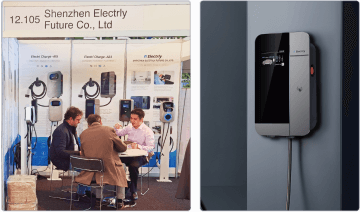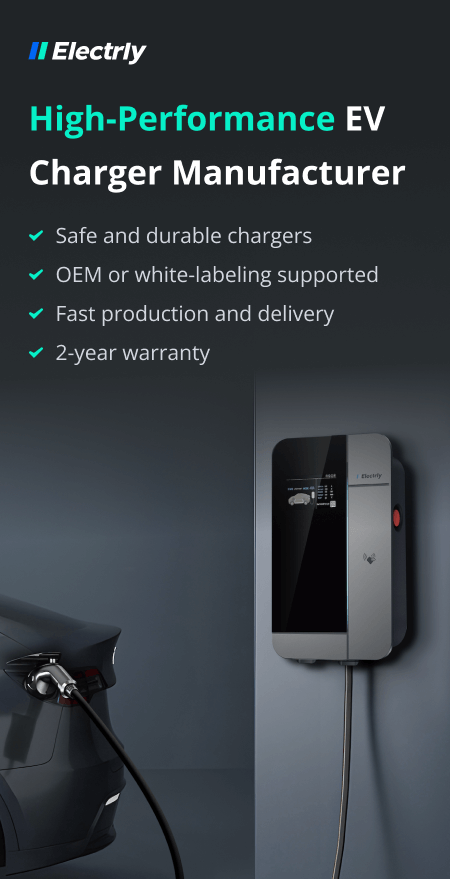Want to have your EV charging station installed outdoors? Not sure if outdoor EV charging is safe? The article is right for you.
If you live in a place that gets snowy in the winter, wet in the summer, or just plain hot, you may be concerned about charging your electric car outside. If so, you are not alone. Fortunately for residents and business owners alike, installing an outdoor charging station does not have to be a death sentence for your battery. A well-designed charger is built to work in all weather conditions, even direct exposure to the elements.
If you choose to install your charger outdoors, there are many benefits beyond saving money on installation costs and having quicker access to your car. An outdoor charging station can be installed on the more public side of your house, easing traffic flow and giving you access when needed.
I. What are the Types of Outdoor EV Charging Stations
The first thing to know about outdoor charging stations is that they have three levels, each with distinct characteristics. Here’s a brief description of each level.
Level 1 outdoor chargers are plentiful and inexpensive. If you want to charge your electric car outdoor, look for a standard 110-120 volt outlet, and you can use the same plug for your electric car as you would for your microwave or other household appliances. You can usually find a level one charger at many gas stations or, if that is not handy, at most major supermarkets or convenience stores.
Level one outdoor charging stations have no control over the power delivered to the car’s battery pack. During cold winter months, this can be a problem when the resistance of electric vehicle wiring, connectors, and the electric car’s battery pack all increase.

You can also use a level two charger (an EVSE—Electric Vehicle Service Equipment) to charge your car outdoor. Level two outdoor chargers are simply a wall outlet and cord on steroids—they can deliver more amps and more volts than the regular AC outlet in your wall. Most EVSEs will have various connector options to accommodate different electric vehicle makes and models.
Besides delivering more than the standard wall outlet, EVSEs also have some control over the power going into your vehicle. This is a significant benefit since it may eliminate the dreaded “cold start” issue.
DC Fast Chargers
The fastest way to charge your electric car in the shortest time is with DC Fast Charging. This charging tech uses special plugs and lines different from the same old, same old Level 1 or Level 2 chargers you’re probably used to. You plug in a DC Fast Charger for about 15 minutes, and you get most of your car’s miles back (up to 80%).
DC Fast Chargers are located at grocery stores, airports, and other public places. It’s important to note that each DC Fast Charger is designed for a specific make and model of the electric car, so when you pull up to a DC Fast Charger station the first time you use it, your EV will need to “ping” the charging station.
This process takes about 10 seconds and involves the EV saying hi to the charger—it’s normal for all cars with built-in smart technology.
II. Which Level Charging Station is Best for Outdoor Use?
The answer is, “It Depends.”
If you only drive short distances to work and back, a Level 1 would be best. Just be aware that some car manufacturers suggest that all new EV owners consider installing indoor level 2/Level 3 chargers outdoor to extend their range before they can begin using fast-charging stations.
Several factors determine whether or not level one or level two charging will work best for you. If you have a brand new model electric vehicle, the chances are that you opted for a level two charger. However, if you don’t have a level two EV and don’t plan on upgrading soon, it is worth noting that the level one charging stations can still provide an adequate charge for your vehicle.
The main difference between level one and level two is that if your car is parked outside at home and needs charging quickly, higher output from the wall outlet makes it easier to reach a full charge more quickly.
III. Advantages of Outdoor EV Charging
Are you a homeowner that wishes to install an outdoor charging station at home? Here are the top five advantages of installing an outdoor charging station:

- People who charge their EVs outdoors claim to enjoy the convenience and freedom of not worrying about plugging in their car when it’s convenient for them, like if they want to run out in the middle of the day.
- Charging outdoors comes with its own set of perks. Most countries and regions have no registration restrictions for EVs or incentives, which gives you a broader range of charging options (if where they live supports EV ownership).
- When charging in your garage, you’ll be able to control the weather, which can help you if you live in hot and humid climates where the outdoors can cause charging station issues. Additionally, if you want to use your car on rare occasions (like when visiting family), having an EV charger outside can make it easier to get it running again.
- You’ll also gain peace of mind knowing that you can charge on-demand at all hours without worrying about getting caught without a charge.
- If you live in a multi-family or condo building, you’ll be able to have multiple charging stations installed so that each household can have its own charging station. This makes it easy to keep your car on a charge while still allowing access to the electric grid.
IV. Is it Safe to Get my Electric Vehicle Charged Outside?
If you’re considering installing an outdoor charging station near your home, we understand you’re nervous that potential damage will befall your vehicle. If you’ve never gotten your car charged outside before, the odds favor you by becoming a bit hesitant about using one. However, everything will be fine and safe for you and your vehicle.
- EV Charging Safeguard
Outdoor electric vehicle (EV) charging is a no-brainer convenience, but there’s a caveat. Electric current is dangerous, and you should avoid contact with any exposed wires or connectors. With that in mind, below are some safety tips to remember when charging your car outside your home.
Don’t park your EV on top of or near large metal objects that can conduct electricity, like garbage cans or metal fences. Large metallic objects may act as a conduit for grounded electric current should you contact the rig.
- EV and Charging Station Ingress Protection
High-performance outdoor chargers provide a safe place for your electric vehicle to charge. However, the inlet pipes of the charging station may still be exposed and could be subject to damage from physical impacts, water intrusion, or electrical surges.
The charging tower should be built with sophisticated materials and stringent testing procedures for the new range of smart home charging stations. This includes rigorous fire tests and an extensive analysis of ingress protection.
- Charging Station Regulations
Charging station regulations and codes vary from city to city, state to state, and country. Because of this, it is essential to check in with the authorities in your city or town regarding the legalities of installing your charging station.
Often, you will be required to go through a local permit process before installing an electric vehicle charging station at home or commercially. Make sure you get everything in writing and that you are compliant with all laws. Even then, it is always a good idea to check back later as laws may change from time to time.
V. Where do you Recommend for EV Charging: Indoor or Outdoor?
Indoor chargers offer more convenience, especially if you can install them in your garage. But they are also more expensive, both to buy and to install. And if you go with a Level 2 system (the most common), you’ll need to dedicate a 240V circuit, which involves professional electrical installation and costs a few thousand dollars.
An outdoor charger is far less expensive and easier to install yourself. The downside is that once it’s out there in the rain and snow, it’s susceptible to rust and damage from regular use. If money is no object or you live in an area with temperate weather all year long, an outdoor EV charging station might be right for you.
VI. What Advice Will You Give for Outdoor EV Charging in Winter or in Extreme Weather?
The biggest challenge with charging an electric vehicle in extremely cold weather is the battery. The battery doesn’t like extreme temperatures, especially those below freezing. This is because batteries work best at around 70 degrees Fahrenheit.
Going below that can mean that the chemical reactions inside your car’s battery will stop altogether, even if you try to charge it again once the temperature rises again. So, it’s essential to understand how to charge an EV in the cold so that you can keep on top of your battery’s health.
The first thing you will need for charging in the cold is a special charger. These chargers are a little different from those you would use to charge your car in warmer weather.
Conclusion
The benefits of outdoor charging stations are plentiful, and the dangers are minimal. Charging your car outside is a smart option if you have the space. One last thing to consider is the quality of your car charger’s enclosure. Although many chargers can be used outdoors, quality chargers will keep you safe in all weather conditions.


